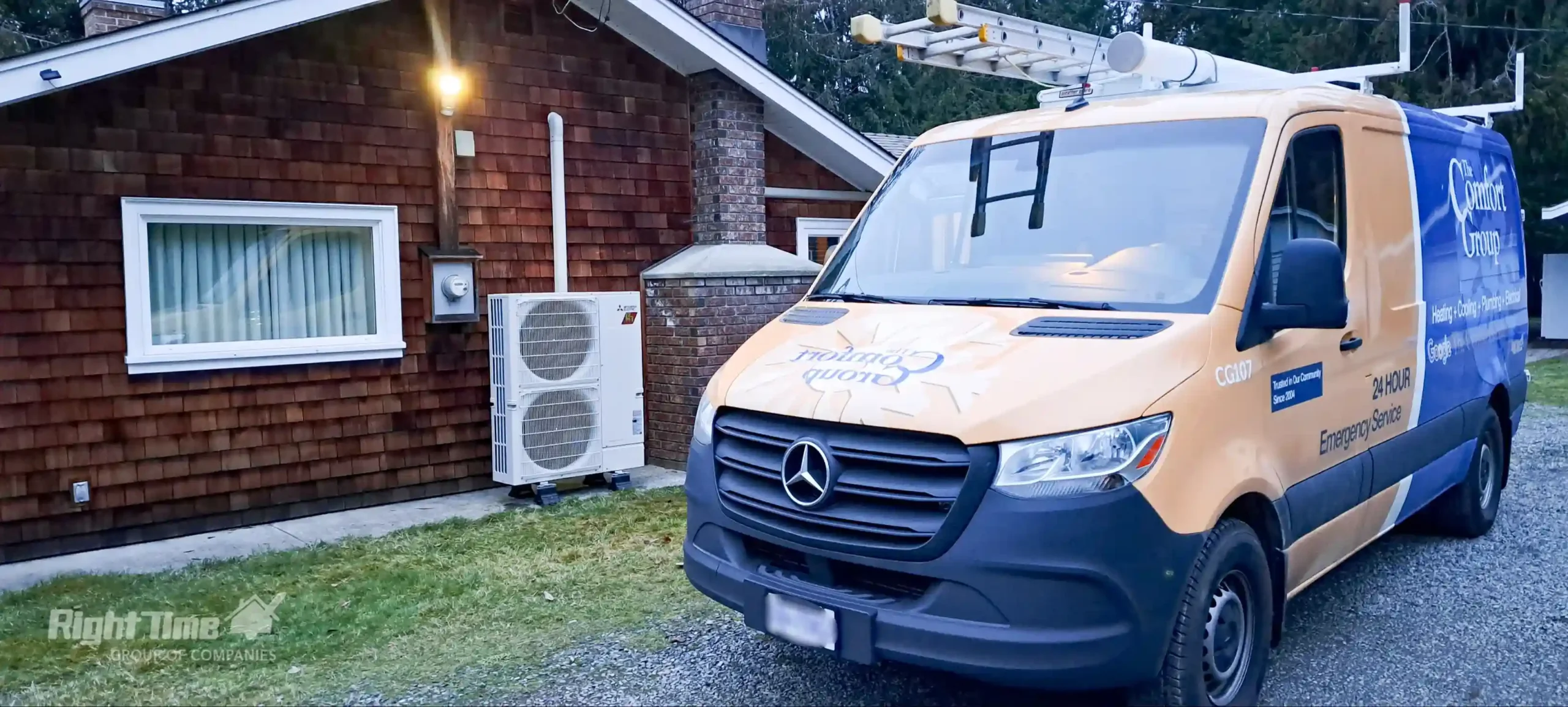Rainy-Season Humidity Targets for Mould-Safe Comfort

Victoria’s coastal climate is famous for frequent fall and winter rain. Those damp periods mean outside air often arrives already moisture-laden; once indoors, everyday activities—showers, cooking, drying laundry—push relative humidity (RH) even higher. That’s why the most comfortable (and mould-safe) homes on the Island follow clear RH targets and simple routines that control moisture without over-ventilating.
The Targets That Keep You Comfortable and Mould-Safe
Health Canada recommends keeping indoor RH below 50% in summer and about 30–35% in winter; many homes remain comfortable within this range overall. Below ~30%, you’ll notice dryness (skin, sinuses); above ~50%, condensation and mould risk increase, especially on cool glass and in low-circulation corners.
Quick rule of thumb:
- If you see persistent window condensation in the morning, the RH is likely too high for your current indoor temperature. Ventilate briefly and reduce moisture at the source.
- If you get static and dry air, RH has dropped too low, add controlled moisture (or reduce exhaust).
Vent First: Stop Moisture at the Source
Before you reach for equipment settings, use short, targeted ventilation to remove moisture where it starts:
- Bathrooms: Run the bath fan during showers and for about 20–30 minutes after. (per Canadian guidance; Health Canada recommends ~30 minutes after showers, and BC Housing advises ~20 minutes).
- Kitchen: Use the range hood on a higher setting while boiling or frying; keep lids on pots. (consistent with Health Canada source-control recommendations).
- Laundry: Vent dryers outdoors; avoid drying clothes inside on the rainiest days.
Then Seal and Circulate.
Moist sea air will keep sneaking in through gaps. Basic air-sealing (weather-stripping around leaky doors and older windows) helps keep humid outdoor air where it belongs, outside, so your ventilation can be brief and strategic, not constant. (NRCan recommends weather-stripping and caulking to reduce uncontrolled infiltration.) Inside, move air through “quiet” corners with the furnace/air handler fan on auto (or short periodic “circulate” runs) to help even out humidity room-to-room without over-drying or over-ventilating. A balanced HRV/ERV that’s clean and correctly set helps manage moisture while preserving comfort.
Use Equipment Modes the Smart Way
- Heat pumps (and many mini-splits) have a “Dry” mode. Use it on mild, damp days when you need moisture removal more than heat, and monitor for over-cooling. As outside temperatures fall, switch back to Heat and rely on source control + exhaust fans to avoid over-cooling the space.
- Humidifiers are helpful when cold snaps temporarily drive the RH too low. Victoria winters are mild compared to the Prairies, but cold, clear spells still occur; if indoor RH dips below ~30–35%, an appropriately sized whole-home humidifier can restore comfort.
- Portable dehumidifiers shine in closed, cool spaces (basements, storage rooms) where exhaust fans don’t reach well.
The goal is targeted humidity control: remove moisture quickly when it spikes, and add it gently when the air turns too dry.
What “Good” Looks Like Day-to-Day
- Morning check: If windows are fogged every morning, increase bathroom fan time, check range hood use, and shorten showers.
- Cooking routine: Fan on; lids on pots; crack a window briefly if the kitchen gets steamy.
- Laundry plan: Avoid long indoor drying on the wettest days.
- Basement watch: Use a hygrometer; keep RH ~40–50% and run a dehumidifier as needed.
- Heat-pump savvy: Try “Dry” on mild, damp days; return to Heat as nights cool.
- Cold-snap comfort: If RH falls below ~30–35%, consider using the humidifier and reducing exhaust-fan run times to avoid over-drying.
DIY vs Pro: Where to Draw the Line
Homeowner-friendly:
- Replace or clean furnace/HRV filters.
- Use the bath/kitchen exhaust when performing moisture-intensive tasks.
- Clear supply/return registers; keep furniture and drapes from blocking airflow.
- Basic weather-stripping and door sweeps; spot checks for obvious window drafts.
- Hygrometer checks in problem rooms.
Pro-only (book The Comfort Group):
- Gas appliance service and any work on combustion/venting must be done by a licensed gas fitter in BC (per Technical Safety BC / Gas Safety Regulation).
- Humidifier sizing, installation, and calibration.
- HRV/ERV balance and whole-home airflow tuning.
- Heat-pump controls/defrost diagnostics; electrical or refrigerant work.
- Combustion safety checks and venting; CO and spillage testing.
- Finding the “sweet spot” between ventilation and comfort for your floor plan.
Why Does This Matter More on Victoria?
Environment and Climate Change Canada’s climate normals show coastal Island sites with sustained fall/winter precipitation, meaning your home faces long stretches of high outdoor humidity and cooler indoor surfaces; exactly the recipe for window condensation and mould growth if RH isn’t managed. (e.g., Nanaimo A and Victoria Int’l normals). That’s why short, purposeful exhaust, modest air-sealing, and tuned equipment settings are especially valuable here.
Book a Rainy-Season Tune-Up.
Our technicians can verify humidifier settings, HRV/ERV balance, heat-pump controls, and overall airflow, and we’ll help set RH targets that fit your home’s layout and windows. Prefer predictable upkeep? Our Maintenance Plans include an annual tune-up and priority service so you’re set for the wet months ahead.

